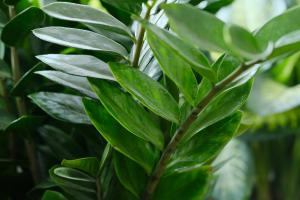How Does Grey Water Affect Plant Growth?
Grey water refers to wastewater generated from activities such as washing dishes, clothes, and bathing. Many eco-conscious individuals have been exploring the use of grey water for watering their gardens as a way of conserving water. However, the question remains, how does grey water affect plant growth? In this article, we look at the impact of grey water on plant growth and the dos and don'ts of using it.
The Advantages of Using Grey Water for Plant Growth
Grey water is a rich source of nutrients for plants. It contains dissolved solids such as nitrogen, phosphorous, and potassium, which are essential for plant growth. The use of grey water can help reduce the amount of freshwater used for irrigation, which is especially important in areas facing water scarcity.
In addition, grey water is generally free of harsh chemicals such as chlorine and other cleaning agents commonly found in tap water. Plants watered with grey water have been known to have fewer pest problems and diseases compared to those watered with tap water.
The Disadvantages of Using Grey Water on Plants
While there are many advantages to using grey water for plant growth, there are also some disadvantages to consider. One of the main issues is the potential build-up of salt in the soil. Grey water can contain high levels of salt, which can harm plants if used excessively. It is essential to monitor soil salinity levels and maintain proper drainage to prevent salt buildup.
Another disadvantage is the presence of harmful bacteria in grey water. This can be especially problematic if the grey water comes into direct contact with fruits and vegetables that are consumed raw. It is important to avoid using grey water on edible plants or to use it with caution and only on the soil surface.
Tips for Using Grey Water on Plants
If you're considering using grey water on your plants, here are some tips to keep in mind:
Make sure the grey water is free of harsh chemicals such as bleach and drain cleaners.
Do not use grey water on edible plants or on plants that will come into direct contact with food.
Avoid using grey water on plants that are sensitive to salt buildup, such as strawberries and avocados.
Apply grey water to the soil surface and avoid getting it on the plant leaves.
Rotate the use of grey water with freshwater to prevent salt buildup in the soil.
Monitor soil salinity levels regularly to ensure they do not become too high.
Conclusion
Using grey water for plant growth can be an effective way to conserve water and provide plants with essential nutrients. However, it is important to be aware of the potential drawbacks and to follow the proper guidelines for use. With proper monitoring and care, grey water can be a valuable resource for anyone looking to maintain a healthy garden while reducing their environmental impact.

 how many times do yo...
how many times do yo... how many planted tre...
how many planted tre... how many pine trees ...
how many pine trees ... how many pecan trees...
how many pecan trees... how many plants comp...
how many plants comp... how many plants can ...
how many plants can ... how many plants and ...
how many plants and ... how many pepper plan...
how many pepper plan...































